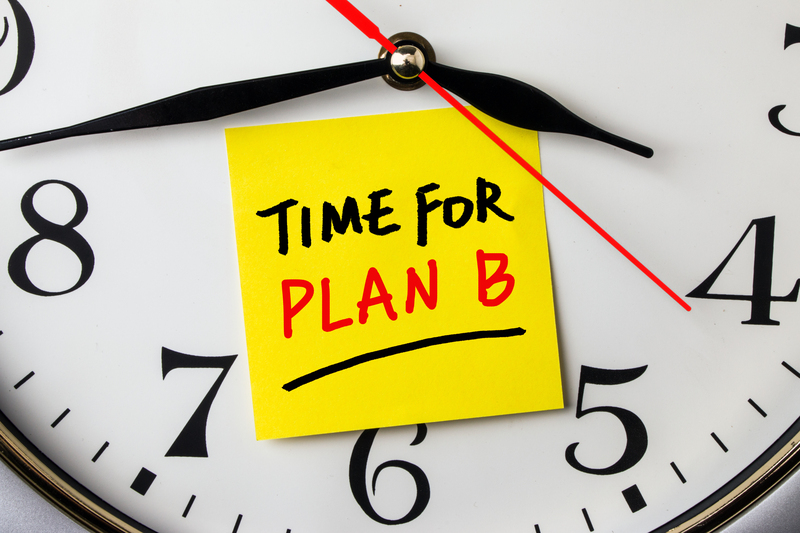Expert Guide to Moving Your Bed and Mattress
Posted on 17/06/2025
Expert Guide to Moving Your Bed and Mattress
Moving your bed and mattress may seem daunting, but with the right tips and guidance, you can simplify the process. Whether you're relocating across the city or to a different state, ensuring your bed and mattress are transported safely is crucial for a restful night's sleep in your new home. This comprehensive expert guide covers everything you need to know for a hassle-free bed and mattress move.

Why a Proper Bed and Mattress Move Matters
Ensuring the optimal condition of your sleeping setup is crucial for both health and comfort. Improper handling can result in:
- Physical damage to the bed frame or mattress
- Compromised hygiene if mattresses are exposed to dust, dirt, or moisture
- Unnecessary delays or inconvenience during move-in
Having a comprehensive plan for moving your bed and mattress avoids these common pitfalls.
Preparation: The Key to a Successful Bed and Mattress Move
1. Gather Necessary Tools and Supplies
Before attempting to move your bed and mattress, make sure you have the following essentials:
- Furniture sliders or moving blankets to prevent floor damage
- Mattress bag or protective cover for dust and moisture protection
- Ratchet straps or rope for securing mattress and parts in the moving truck
- Tool kit for dismantling bed frames
- Plastic bags and tape for storing hardware and screws
- Helper or enough manpower for lifting and moving heavier pieces
2. Measure Everything Clearly
It is vital to measure your mattress, bed frame, and doorways or hallways along the moving path. This prevents frustration if parts don't fit through elevators or staircases. Take note of:
- Mattress dimensions (Twin, Full, Queen, King, etc.)
- Bed frame size and parts
- Access points (doors, hallways, stairwells, etc.)
3. Plan Your Moving Route
Identify clear and obstacle-free paths from your bedroom to the moving truck. Remove any fragile items or tripping hazards along the way to ensure a seamless move.
Step-by-Step: Disassembling and Packing Your Bed Frame
1. Strip the Bedding First
Start by removing all bedding -- sheets, comforters, pillows -- and pack them separately. This reduces bulk and makes the structure easier to handle.
2. Take Photos for Reassembly
Before you start unscrewing parts, take detailed photos of your assembled bed frame. These visual guides are a lifesaver when you're reassembling everything in your new space.
3. Dismantle with Care
Use your tool kit to carefully unscrew the headboard, footboard, and side rails. Keep all hardware in labeled plastic bags and tape the bags to corresponding furniture pieces. For platform beds, be cautious with slats and support beams--stack them flat to prevent warping.
4. Protect Bed Frame Parts
Wrap each part with moving blankets or bubble wrap, especially delicate decorative pieces or wooden surfaces. This step is essential to avoid dents or scratches during transport.
Expert Tips for Moving Mattresses Safely
1. Protect with a Mattress Bag
An encased mattress bag is the best way to shield your mattress from dirt, moisture, pests, and damage. These affordable covers are available for all sizes and seal tightly for maximum protection.
2. Avoid Bending or Folding
Never bend your mattress unless it is specifically designed to fold. Doing so may damage the internal springs or memory foam layers, resulting in discomfort and structural damage.
3. Use Proper Lifting Techniques
Mattresses can be unwieldy and heavy. Always lift with your knees, not your back, and get help when needed. Grasp the mattress from the longer sides, and avoid dragging it on the floor to prevent tears.
4. Secure During Transport
Keep mattresses upright and flat in the moving vehicle. Use straps or ropes to secure them, preventing any sliding or falling, which could cause warping or contamination.
5. Special Care for Specific Mattress Types
- Memory Foam: Always keep it flat. Folding or storing on the side may cause deformation.
- Spring Mattresses: Laying them on their sides briefly is fine, but avoid folding.
- Hybrid Mattresses: Treat them similarly to memory foam, as bending can damage the internal structure.
How To Move Your Bed and Mattress: Professional Techniques
1. DIY vs. Professional Movers
If your bed frame is bulky, antique, or made of delicate materials, hiring professionals may be a wise investment. Professional movers have the training and tools to protect even the most complex bed styles, including four-poster beds and intricate headboards.
However, for standard bed and mattress moves, a well-planned DIY approach can be highly successful with the tips in this guide.
2. Using a Moving Truck Properly
- Load mattresses standing upright along the wall of the truck whenever possible, secured tightly.
- Bed frames should be flat and padded to avoid movement and damage.
- Small parts and hardware should be stored together to avoid misplacement.
3. Navigating Tight Spaces
Measure doorways, stairwells, and elevators in both your old and new home. Sometimes, taking doors off their hinges or temporarily removing banisters can make the process smoother.
Pro Tip: Sometimes, hiring specialty "bed movers" for challenging homes (e.g., lots of stairs or narrow entries) can save time and prevent damage.
Unpacking and Reassembling Your Bed and Mattress
1. Inspect Everything Upon Arrival
Before assembly, inspect your mattress and bed frame for any signs of damage or moisture. If your mattress absorbed water or shows stains, let it air dry thoroughly before use.
2. Reassemble According to Instructions
Follow manufacturer instructions if available, or refer to the photos you took during disassembly. Secure all joints and legs tightly for stability.
Start by assembling the frame in your optimal bedroom spot, then place slats and support beams. Finally, carefully set your mattress in place.
3. Unpack and Replace Bedding
Once the mattress is set, replace clean sheets, blankets, and pillows. After a long move, a fresh, cozy bed is the perfect reward!
How to Dispose of or Donate Old Mattresses and Bed Frames
1. Recycling Options
If you're moving and decide to replace your mattress, numerous cities offer recycling centers specializing in old bedding. Many mattress components--springs, foam, and fabric--are recyclable, reducing landfill waste.
2. Donation Centers
Charities such as Goodwill, The Salvation Army, or local shelters may accept lightly used mattresses and bed frames. Ensure mattresses are clean and free from bed bugs or severe stains before donating.
3. Junk Removal Services
For mattresses and beds that are no longer usable, hire a local junk removal service for responsible disposal. Some moving companies offer this as an added service.
Moving Bed and Mattress: Common Mistakes and How to Avoid Them
- Not measuring doors and halls before moving large frames
- Forgetting to protect the mattress with a suitable cover
- Not labeling hardware bags, leading to lost or mixed-up screws
- Dragging mattresses and frames, risking damage to both furniture and flooring
- Not securing mattresses in transport, causing them to fall or bend
Avoiding these issues ensures a smooth, stress-free move for both your bed and mattress.
Frequently Asked Questions about Moving Your Bed and Mattress
How do I move a king-size mattress?
King-size mattresses are large and heavy; never attempt to move one alone. Use a mattress bag for protection, and always have at least one helper. A moving truck with a sufficient loading area (preferably with a ramp or lift) is ideal.
Can I transport a mattress on the roof of my car?
This is generally unsafe and not recommended. Mattresses can act "like a sail" and may blow off, creating dangerous situations. Rent a moving truck or van, or hire a professional delivery service instead.
Is it okay to leave a mattress in storage temporarily?
Yes, as long as you protect it with a mattress bag and store it flat if possible. Choose a climate-controlled facility to prevent moisture buildup, mold, and mildew.

Final Thoughts: Moving Your Bed and Mattress with Confidence
Careful planning and meticulous execution are vital when moving your bed and mattress. By following expert advice and using the right protective gear, you'll prevent damage, save time, and quickly settle into your new bedroom. Whether you're moving a memory foam mattress or a classic wooden bed frame, these professional techniques ensure a safe and efficient relocation.
Now you're equipped with the knowledge for a smooth move--rest easy knowing your bed and mattress are in safe hands!
Summary: Key Takeaways from the Expert Guide to Moving Your Bed and Mattress
- Gather all supplies (mattress bags, tools, blankets, straps)
- Disassemble and photograph the bed frame before moving
- Protect mattresses and bed parts during transport
- Keep hardware organized and labeled
- Choose the right vehicle and secure everything properly
- Reassemble carefully in your new home
- Dispose, recycle, or donate old beds and mattresses responsibly
For more moving tips or to find local moving help for your bed and mattress, explore our other expert guides and checklists!



